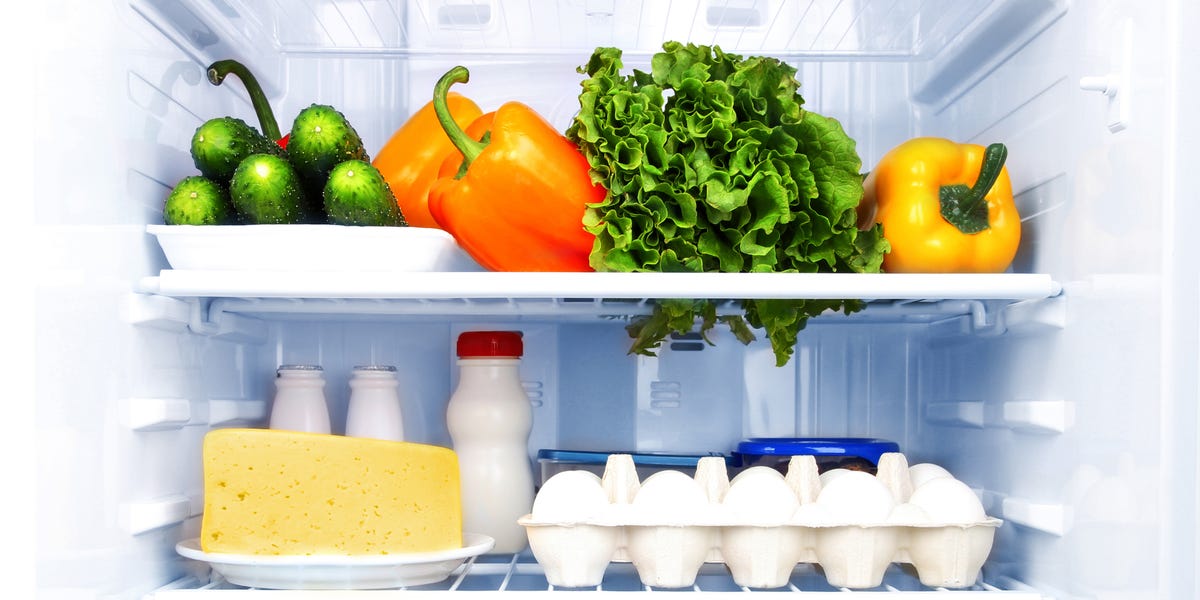
When the power goes out in your home, you’re probably immediately concerned about the lack of light and Wi-Fi. But if a power outage drags on for hours, you’re faced with a new dilemma: Is it safe to eat the food in my fridge?
“Usually it’s safe to eat the food in your fridge after the power goes out, but there’s a big asterisk,” says Darin Detwiler, Ph.D., director of the Regulatory Affairs of Food and Food Industries program at Northeastern University.
That means sometimes it’s totally fine, and sometimes it’s definitely not. Here’s how to tell the difference, plus how to keep your food as safe as possible while the power is out.
What’s the biggest risk with refrigerated or frozen food after a power outage?
Refrigerated food should be stored at or below 40 degrees Fahrenheit, according to the Food and Drug Administration (FDA), while your freezer should be at 0 degrees Fahrenheit.
Once the temperature creeps above that, you may be dealing with a plethora of germs that can lead to foodborne illness, says Natalie R. Seymour, extension associate at North Carolina State University’s agricultural and human sciences department. “The main reason we refrigerate food is to prevent the growth of certain types of bacteria,” Seymour explains. “When temperatures rise, that bacteria can grow.”
Foodborne illness is caused by pathogenic bacteria, which is different from the bacteria that makes your food spoil, the FDA says. Many pathogenic organisms show up in raw or undercooked meat, poultry, seafood, milk, and eggs, as well as fruits and vegetables. Keeping those foods properly chilled will slow the growth of bacteria.
One potential source of foodborne illness to be wary of is Listeria, a bacterium that can grow on foods, especially when your refrigerator temperature is above 40 degrees, the FDA says. But there are plenty of others that can crop up in under-refrigerated foods, which is why proper refrigeration is important, Seymour says.
What should you to do keep your food safe during a power outage?
If you think of it, there are a few steps you can take in the immediate aftermath of a power outage to maximize the odds your food will be OK.
✔️Put meats in the freezer. “Go into your fridge really quickly, take meats, and throw them into the freezer,” Detwiler says. While you can’t do something like this with other perishables like eggs, putting your meats into a colder space increases the odds they’ll be OK if the power outage drags on, he says.
✔️Add ice packs to your fridge. If you know a big storm, like a hurricane, is headed your way, Seymour recommends filling plastic water bottles and freezing them. Then, when the power goes out, you can put those bottles in your fridge for extra cooling. Regular ice packs work well too, she says.
✔️Try to keep the fridge door closed as much as possible. Sure, you’ll need to open it to remove your meats and add ice, but it’s best to otherwise keep the door closed to retain a cooler temperature, Detwiler says.
What are the signs your food isn’t OK to eat after the power comes back on?
Time is obviously a factor here. If the power is out for an hour or even a few hours, your risk is low. “If your fridge is set to 38 degrees, the power goes out for three hours, and you never or barely opened the door, the food might be fine,” Detwiler says.
But if you started at a higher baseline temperature, you opened the door a bunch, or the power was out for a really long time, things can get iffy. Plus, you can’t always tell in the immediate aftermath when food isn’t OK to eat. “Not all food will look, smell, feel, or even taste bad right away,” Detwiler says.
He recommends checking your food for perspiration after the power comes back on—that’s a sign that it’s been too warm for too long. “It can almost look like your cheese is sweating,” he says. “That’s not a good sign and means that it’s been too long that your food has been above the ideal temperature.”
Bottom line: If you don’t know if your food is safe to eat, experts say it’s really best to pitch it. “It may suck to throw out food, but it’s way better than dealing with any kind of ramification if it’s gone bad,” Detwiler says.
Support from readers like you helps us do our best work. Go here to subscribe to Prevention and get 12 FREE gifts. And sign up for our FREE newsletter here for daily health, nutrition, and fitness advice.
This content is created and maintained by a third party, and imported onto this page to help users provide their email addresses. You may be able to find more information about this and similar content at piano.io
"eat" - Google News
August 05, 2020 at 10:43PM
https://ift.tt/31r6ptV
How to Tell if It's Safe to Eat the Food in Your Fridge After a Major Power Outage - Prevention.com
"eat" - Google News
https://ift.tt/33WjFpI
https://ift.tt/2VWmZ3q
Bagikan Berita Ini














0 Response to "How to Tell if It's Safe to Eat the Food in Your Fridge After a Major Power Outage - Prevention.com"
Post a Comment